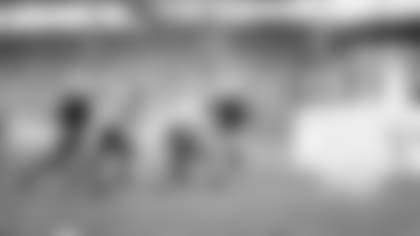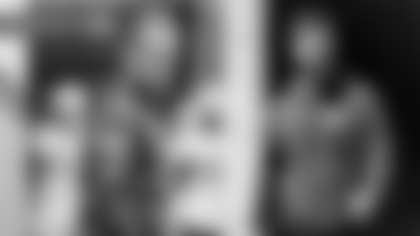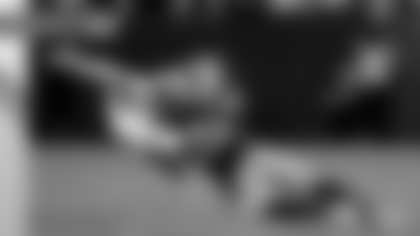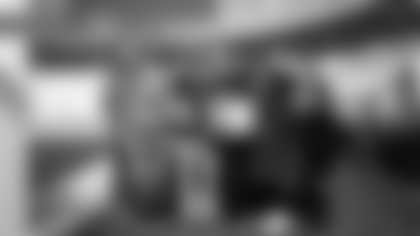Let me start by saying thanks for all the questions. There are far more good ones than I'll be able to answer. I may save some for future use, but please keep in mind it's easy to remember what questions I've answered and not so easy to remember the names submitted with them. Hopefully, over the course of time, we'll get a broad cross-section involved in the dialogue. Please continue to send questions in with your name and hometown to history@packers.com.
A question from Steve
Who came up with the idea of the original public ownership (and why)? Pure genius!
Pure genius is right. It's the only way the Packers would have survived over their first three decades, maybe longer. The story starts with the 1922 season, the Packers' second in the NFL. The packing plants were out of the picture as sponsors, and the team was being run by the Green Bay Football Club, a private corporation. Curly Lambeau was president. Green Bay drew well for two home games in October, but a torrential downpour turned a Nov. 5 game against the Columbus Panhandles into a financial disaster. The GB Football Club emerged from that game $3,400 in debt (nearly $50,000 in today's money). The next two home games didn't draw well, either, so some of the team's most loyal fans decided to turn a Thanksgiving Day non-league game against Duluth into Booster Day to try and pull the club out of its financial hole. They enlisted the aid of Green Bay's service clubs and the mayor, and they went out and tried to sell advance tickets for more than what they were going to cost at the gate. Thanksgiving arrived and so did another rainstorm. So Lambeau and George Whitney Calhoun, among others, huddled before the game and were about to call it off, which wasn't uncommon back then. The GB Football Club would have cut its losses, so to speak, if it didn't play at all. But Andrew Turnbull, one of the owners of the Green Bay Press-Gazette, encouraged the group to go ahead and play. His thinking was that if the game was cancelled, the team would lose its credibility with its fans and have no chance of being revived. Turnbull also promised that if the owners agreed to play he would rally the business community and raise enough money to put the team back on firm financial footing before the next season. The game was played, and I've recently read two different accounts about the attendance: One put the crowd at 1,300, another at 300. (In the past, the Packers Media Guide listed it at 2,000, but that was wrong. The Press-Gazette reported the next day that the rain "kept about 2,000 pigskin followers away from the park," but gave no attendance.) True to his word, Turnbull got close to 150 businessmen and fans to attend a meeting a week later, and the process of creating the community-supported Green Bay Football Corporation began. I think Turnbull deserves most of the credit, but the other key person, John Kittell, has been long forgotten. Almost everyone who has written a book about the history of the Packers has neglected to mention him. Kittell was a local attorney. He presided at the Dec. 7 meeting. He was elected vice president of the original Green Bay Football Corp. He was one of the first 14 people to buy stock, and he was the only attorney to sign the original Articles of Incorporation, which I would assume means he wrote them.
A question from Shane
What is one thing that has remained constant with the Packers since the founding of the franchise?
Fan support, but in different ways. At the beginning, it was mostly the support of community leaders in Green Bay. Don't get me wrong. As early as 1921, in what was the Packers' first season in what became the NFL, they were drawing fans from the Fox River valley, the U.P. The Packers had a particularly loyal following in Sturgeon Bay back then. But to be fair, the support really came from throughout Wisconsin. That said, it's also true the Packers struggled to fill seats on game day into the 1920s and even beyond, at times. Green Bay has been the smallest city in the league for most of its existence. Believe it or not, they had to compete with Green Bay East and West high schools for fans. High school football was huge in Green Bay into the 1950s. Just from reading history, I get the impression maybe some local fans also had trouble accepting the Packers were no longer a team of local players once they joined the NFL. They dumped a number of them in 1921 and more in 1922 and replaced them with players from throughout the Midwest and even other parts of the country. But there were always enough community-minded leaders in Green Bay to keep the team going. It wasn't a large group, but it wasn't just the Hungry Five, either, as some authors have suggested. A lot of different people invested a lot of hours in keeping the franchise solvent through some tough times. Today, it's maybe more the size of the team's fan base that's so important. It extends worldwide. That's what puts the Packers on at least the same plane as the big-market teams, and it's also what separates them from some of the smaller-market teams that don't make as much money.
A question from Kay
In 1937, a family member of mine played for the Packers. Lyle Sturgeon, No. 26. Is there information somewhere about that team I could look for?
Lyle Sturgeon, a tackle from North Dakota State, played just that one season. He started the opener against the Chicago Cardinals and played as a sub in seven others. Keep in mind, that was when players typically played both ways, offense and defense. The Packers finished 7-4 that year, second in the Western Division to the Bears. Sturgeon wasn't drafted. The '37 draft consisted of 10 rounds and only 100 players were picked. But Sturgeon had played in the East-West Shrine Game in San Francisco, a game that Curly Lambeau usually scouted. The Packers announced Sturgeon's signing April 1, 1937. Lambeau was quoted as saying that day, "Sturgeon was one of the outstanding linemen on the western squad at San Francisco New Year's Day." One of the things that caught Lambeau's eye was Sturgeon's placekicking ability, but he didn't kick for the Packers. Sturgeon returned to the Packers in 1938. He played in the Intra-Squad Game and the team's one exhibition game in Ironwood, Mich., on Sept. 5, but was dropped before the league opener six days later. As you probably know, he died in Green Bay in 1958 at age 44. He was curling when he suffered a heart attack. Anyway, your family might enjoy this lead on a profile that appeared in the Press-Gazette on Sept. 11, 1937. It read: "A big, conscientious workman who appears destined to earn popularity … Arrival of yesterday's rain didn't bother Sturgeon. He likes to play in the cold soup."
Mark from Hollywood, CA
Since the Lombardi years, my dad has a story that during a game the refs were measuring for a first down for the opposing team when Ray Nitschke said, "Give it to them, we're not through with 'em yet." Any truth to it?
Good story, but can't tell you if it's fact or fiction. If you want to dig into it, look online for a copy of "Mean on Sunday: The Autobiography of Ray Nitschke." There's no index and I didn't find anything quickly scanning it. The book was published in 1973, so if Nitschke actually said it, that would be the likely place to look.
A question from Kevin
What did the Packers give the Chargers when they acquired John Jefferson?
The Packers gave up wide receiver Aundra Thompson, first-round draft picks in 1982 (13th overall) and '83 (20th overall), and second-round picks in 1982 and '84. In addition to Jefferson, the Packers received a first-round pick in 1982 (22nd overall). San Diego traded three of the four picks, including one of the No. 1 picks in the Wes Chandler deal, but the different teams that eventually exercised those picks selected wide receiver Lindsay Scott, running back-kick returner Gary Anderson, running back Robert Weathers and tight end Glenn Dennison. Anderson was the best of the bunch. The Packers used their pick on guard Ron Hallstrom.
A question from Bob
How many Packers from Super Bowl I are still with us?
According to the 1967 NFL Record Manual, 39 Packers played in Super Bowl I. Paul Hornung was the other man on the roster, but did not play. The following 28 are still alive. WR -- Carroll Dale, Boyd Dowler, Bob Long, Red Mack; TE -- Marv Fleming, Bill Anderson; T -- Forrest Gregg, Bob Skoronski, Steve Wright; G -- Jerry Kramer, Fuzzy Thurston; C -- Bill Curry, Ken Bowman; QB -- Bart Starr, Zeke Bratkowski; RB -- Donny Anderson, Jim Taylor, Jim Grabowski, Phil Vandersea, Paul Hornung; DE -- Willie Davis, DT -- Jim Weatherwax; LB -- Dave Robinson; CB -- Herb Adderley, Doug Hart, S -- Willie Wood, Tom Brown, Dave Hathcock. The deceased are: Lionel Aldridge, Bob Brown, Lee Roy Caffey, Don Chandler, Tommy Crutcher, Gale Gillingham, Bob Jeter, Henry Jordan, Ron Kostelnik, Max McGee, Ray Nitschke, Elijah Pitts.















